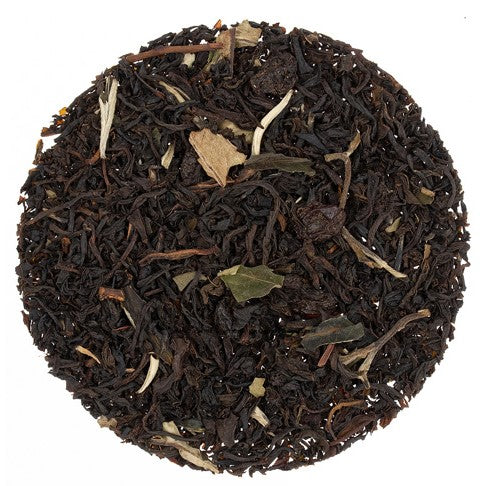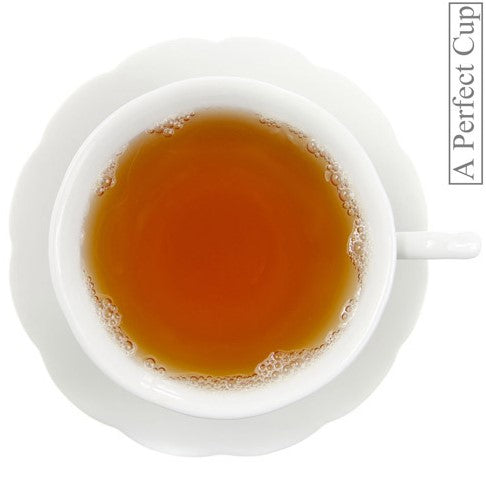Elora Tea
Icewine
Icewine
Couldn't load pickup availability
Beguiling sweet pear notes with hints of berry and caramel. To enhance the natural flavors, consider adding sugar.
INGREDIENTS: Black tea, White tea, Currants, Natural flavors (Organic Compliant), Ontario Icewine.
HEALTH PROPERTIES: High in anti-oxidants
CAFFEINE LEVELS: Medium
TEA SOURCING: Blended with teas from Sri Lanka (Nuwara Eliya, Dimbula and Uva regions), Kenya (Nandi Highlands), India (Nilgiri), Egypt (Nile Delta and Fayoum), and Poland (Gdansk)
ETHICS: Ethical Tea Partnership and GMO free
THE STORY OF ICEWINE
Icewine, the nectar of winter. Or, should we say nectar of the gods? What else could you possibly call a drink that can sell for more than $250,000 a bottle? That's the price you'd have to pay for an ultra rare bottle of Royal DeMaria, 2000 Chardonnay icewine. Most icewines are priced well below that figure, but the scarcity of this liquor keeps prices high. Why? The grapes used to make the sweet dessert wine aren't pressed until they are frozen. As such, 1/5th the amount of grape juice is pressed from each frozen grape compared to the non-frozen variety. For vintners, a general rule of thumb is that each frozen grape will yield just one drop of icewine. The flavor of the finished product is divine. Depending on the variety, the nose can offer notes of peach, pear, honey, dried apricot and green apple. In the glass, the flavor is a sumptuous combination of apricot, peach, mango, melon and other sweet fruits. This fabulous black tea blend uses real icewine to deliver all that fruity sweetness in a rich, round cuppa.
Who invented icewine? No one really knows, but the Latin poet Marcus Valerius Martialis (AD 40-102) wrote that grapes should be left on the vine until they were stiff with frost. Evidently, he preferred the rich, sweet wines produced after November.
What type of tea do we use, how do we flavor the tea and why do we use natural flavors?
Firstly... we only use high grown teas from the top 3 tea growing regions of Sri Lanka - Nuwara Eliya, Dimbula and Uva. These three high-grown districts produce flavorful teas that have classic 'Ceylon' tea character which is noted by floral bouquet and flavor notes, touches of mild astringency, bright coppery color and, most importantly - perfect for use as the base tea of our flavored teas. (We have tested teas from various other origins around the world as base stock for our flavored teas, but none of these teas made the grade.) Dimbula and the western estates of Nuwara Eliya have a major quality peak during Jan/Feb, whereas Uva and the eastern estates of Nuwara Eliya have their peak in July/Aug. This 'dual peak period' allow us to buy the best for our flavored tea blends several times during the year, ensuring top quality and freshness.
Secondly. we use flavoring oils not crystals to give the tea drinker an olfactory holiday before indulging in a liquid tea treat.
Thirdly... we specify natural flavors. High quality tea tastes good and natural flavors do not mask the natural taste of the high grown Ceylon tea. (The norm for many making flavored tea is to use overpowering artificial flavors, which can be used to hide lower quality tea). Natural flavors do not leave an aftertaste giving the tea a clean and true character. It should be noted that natural flavors tend to be somewhat 'soft ' and the flavors slightly muted, but for many this is a refreshing change and one of the desired attributes of our naturally flavored teas.
BREWING INSTRUCTIONS
BREWING INSTRUCTIONS FOR HOT TEA: Infuse one slightly heaping teaspoon for each 8 ounce cup with boiling water for 3-7 minutes.
Infuse 6 slightly heaping teaspoons of tea with 1 1/4 cups of boiling water for 5 minutes. Quarter fill a serving pitcher with cold water, and add the infused tea, straining the leaves, to the pitcher. Add ice and top-up the pitcher with cold water. Add lemon and sweeten to taste. A rule of thumb when preparing fresh brewed iced tea is to increase the strength of hot tea since it will be poured over ice and diluted with cold water.
Infuse 1 slightly heaping teaspoon of loose tea with 6 ounces of boiling water for 5 minutes. Add the tea to a 12 ounce glass, filled with ice, straining the leaves. Add hot tea to a 12oz/375ml acrylic glass filled with ice, straining the tea or removing the bags. Add lemon and sweeten to taste.
NUMBER OF CUPS: 15-20 cups from each 50 grams of tea, with a single use of the leaves. Loose leaf tea is traditionally infused 3 times, with a different flavor profile following each infusion. Accordingly, each 50 gram bag can make up to 60 cups of tea.
Share



